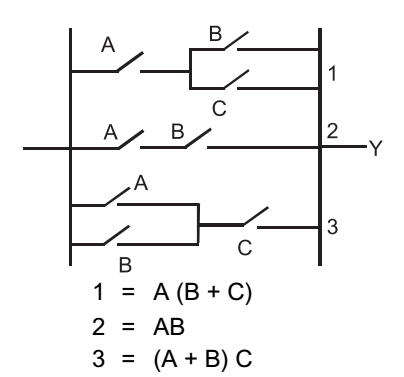Advanced Microprocessors
- A 10 bit A/D convertor is used to digitize an analog signal in the 0 to 5 V range. The maximum peak to peak ripple voltage that can be allowed in the d.c. supply voltage is—
-
View Hint View Answer Discuss in Forum
Smallest incremental change = 1 = 1 210 1024
For 5V,5 = nearly 5 mV 1024
Hence alternative (D) is the correct answer.Correct Option: D
Smallest incremental change = 1 = 1 210 1024
For 5V,5 = nearly 5 mV 1024
Hence alternative (D) is the correct answer.
- The number of comparator carried out in a 4 bit flashtype A/D converter is—
-
View Hint View Answer Discuss in Forum
No. of comparator required = 2n – 1
(where, n = no. of bits)
= 24 – 1 = 15
Hence alternative (B) is the correct answer.Correct Option: B
No. of comparator required = 2n – 1
(where, n = no. of bits)
= 24 – 1 = 15
Hence alternative (B) is the correct answer.
- Among the following the slowest ADC is—
-
View Hint View Answer Discuss in Forum
Integrating type ADC are more accurate but slow.
Correct Option: C
Integrating type ADC are more accurate but slow.
- Which of the following is D to A conversion technique?
-
View Hint View Answer Discuss in Forum
Among the given, weighted resistor technique is only D to A conversion technique.
Correct Option: B
Among the given, weighted resistor technique is only D to A conversion technique.
- The minimum Boolean for the following circuit is—

-
View Hint View Answer Discuss in Forum

If any of the 1, 2 or 3 switch are close, output Y will be 1.
Hence form OR function so output,
Y = A (B + C) + AB + (A + B) C
or Y = AB + AC + AB + AC + BC
or Y = AB + AC + BC
Hence alternative (A) is the correct answer.Correct Option: A

If any of the 1, 2 or 3 switch are close, output Y will be 1.
Hence form OR function so output,
Y = A (B + C) + AB + (A + B) C
or Y = AB + AC + AB + AC + BC
or Y = AB + AC + BC
Hence alternative (A) is the correct answer.

